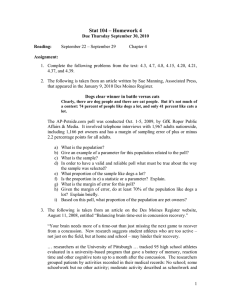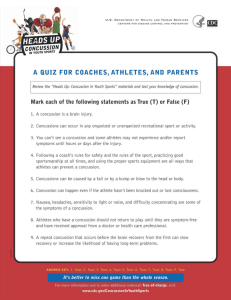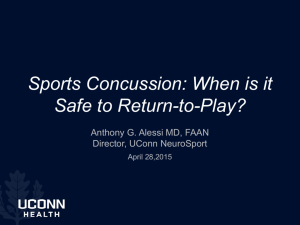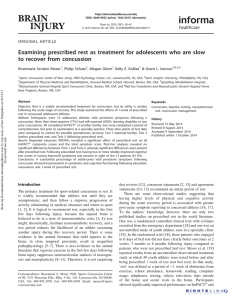Stat 104 – Homework 1 Due Friday, September 5, 2008
advertisement
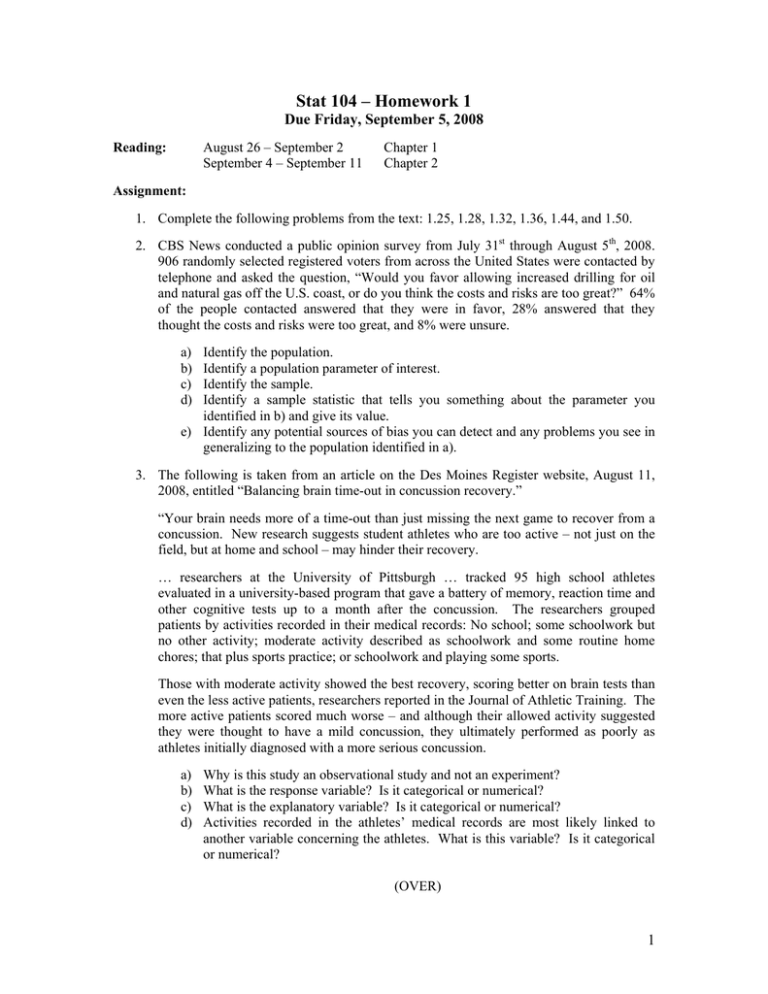
Stat 104 – Homework 1 Due Friday, September 5, 2008 Reading: August 26 – September 2 September 4 – September 11 Chapter 1 Chapter 2 Assignment: 1. Complete the following problems from the text: 1.25, 1.28, 1.32, 1.36, 1.44, and 1.50. 2. CBS News conducted a public opinion survey from July 31st through August 5th, 2008. 906 randomly selected registered voters from across the United States were contacted by telephone and asked the question, “Would you favor allowing increased drilling for oil and natural gas off the U.S. coast, or do you think the costs and risks are too great?” 64% of the people contacted answered that they were in favor, 28% answered that they thought the costs and risks were too great, and 8% were unsure. a) b) c) d) Identify the population. Identify a population parameter of interest. Identify the sample. Identify a sample statistic that tells you something about the parameter you identified in b) and give its value. e) Identify any potential sources of bias you can detect and any problems you see in generalizing to the population identified in a). 3. The following is taken from an article on the Des Moines Register website, August 11, 2008, entitled “Balancing brain time-out in concussion recovery.” “Your brain needs more of a time-out than just missing the next game to recover from a concussion. New research suggests student athletes who are too active – not just on the field, but at home and school – may hinder their recovery. … researchers at the University of Pittsburgh … tracked 95 high school athletes evaluated in a university-based program that gave a battery of memory, reaction time and other cognitive tests up to a month after the concussion. The researchers grouped patients by activities recorded in their medical records: No school; some schoolwork but no other activity; moderate activity described as schoolwork and some routine home chores; that plus sports practice; or schoolwork and playing some sports. Those with moderate activity showed the best recovery, scoring better on brain tests than even the less active patients, researchers reported in the Journal of Athletic Training. The more active patients scored much worse – and although their allowed activity suggested they were thought to have a mild concussion, they ultimately performed as poorly as athletes initially diagnosed with a more serious concussion. a) b) c) d) Why is this study an observational study and not an experiment? What is the response variable? Is it categorical or numerical? What is the explanatory variable? Is it categorical or numerical? Activities recorded in the athletes’ medical records are most likely linked to another variable concerning the athletes. What is this variable? Is it categorical or numerical? (OVER) 1 4. Science Daily (“Frankincense Provides Relief to Arthritis Sufferers,” July 31, 2008) reported on a study that found that an enriched extract of the Indian Frankincense herb Boswellia serrata, trade-name 5-Loxin®, reduced symptoms of osteoarthritis in the knee. The research study, published in Arthritis Research and Therapy, involved 75 osteoarthritis patients. Patients were randomly assigned to treatment groups, with 25 patients in each group. The groups were; High dose (250 mg/day of 5-Loxin®), Low dose 100 mg/day of 5-Loxin®), and Control (capsules of similar color, taste and appearance but with no 5-Loxin®). Neither patients nor researchers knew which group patients were in until after the study was completed. The researchers assessed the functional disability reported by patients at the beginning of the study and at days 7, 30, 60 and 90. Pain, stiffness and physical function were assessed using a standard questionnaire (the Western Ontario and McMaster Universities Osteoarthritis Index). At the end of 90 days, the patients treated with 5-Loxin® had significantly lower pain than those in the Control group. a) b) c) d) e) f) Why is this study an experiment? What is the response variable? What is the explanatory variable? What treatments are compared? Is there a placebo, e.g. a treatment with no intended effect? Explain briefly. Is this a “blind” study, e.g. are participants not aware of which treatment they are receiving? Explain briefly? 2

